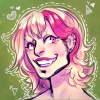Sketching daily is a great way to keep up technical skill, but give yourself some direction. Learn the fundamentals.
Keep yourself inspired. Above all, "expand your visual library" (as Feng Zhu would put it, lol)! In reality, lots of amazing artists will suggest this to you; Stop and smell the roses, do new things at every opportunity. Travel. Explore. Consume media, but not only the ones you usually do, watch something you're pretty sure you'll hate and break down why. It'll help you stay fresh and always have shapes and feelings and ideas to draw upon... or avoid, as the case may be! 
Anyway, back to practicing your technical skill. You say ''drawing'', but I'm assuming you mean describing form also, so I've included some painting tutorials and suggestions, too.
Firstly; I love Ctrl+Paint. It's a resource for learning to paint digitally, but in actuality has an amazing amount of resource for drawing, fundamentals, composition, perspective, all that good stuff. I linked to the library, where you can simply watch all the videos in order, but they have a blog they update often also. They give fantastic advice, and aren't tutorials as such, so I would really highly suggest watching them.
Also, have to suggest PSG Art Tutorial once you have a bit of understanding about construction and anatomy and such. Fantastic resource for beginner painters and people wondering why their art isn't getting the point across to outside viewers. Has a lot of tips to help you go about making your art "pop".
As for books, I've always had a love for the Andrew Loomis ones. I believe they go over proportions and planes of the face and such rather well, though it's been a bit of time since I read through them. I think the current copyright holders are thinking about a new print run (The original reason these books were uploaded was because they were out of print and as such kind of hard to find). As such, here's a site with links to purchase the books.
I also adore Drawn to Life: 20 Golden Years of Disney Masterclasses: Volume 1/Volume 2. It really helped me get a handle on what I was doing wrong when trying to get my characters to express. It's from an animation point of view, but really helps with character expression in regular drawings, and goes over some basic drawing mistakes, too. Also fantastic if you ever want to get into sequential art (comics, or even storyboards).
I also second Drawing on the Right Side of the Brain.
Lastly, I'll throw down some awesome tools for practicing/studies.
Carapace is a free, lightweight perspective grid creation tool from Epic Games. It's easier than basically anything else I've used for this purpose, and I quite love it for when I'm not quite up to drawing in a grid by hand.
PIXELovely is a site that is incredible for quick figure/gesture drawing sessions, and now has hand, feet and face tools in addition to it's original Full Body and Animal practice tools. It's basically flashcards for artists, and I find that doing a Class mode session once a week, and a couple of 30 sec gesture sessions (where I just try to capture the essence and weight of a pose with a few lines) and 2 minute figure sketches (Good flow, proper proportion and construction, but no details) tends to keep me in shape. Some people prefer longer sessions, though, as it allows them to capture the mood/shading/properly study the anatomy. It's up to you!
Screenshot Archives. I like CinemaSquid's Blu-ray Movie screens, but they're not always the best shots; so you kind of have to already know what you're looking for in terms of what makes a good study. If you hunt around for a good, hi-rez movie screenshot site, you'll be able to make them into fantastic value and compositional studies. Basic Value Study Tutorial (just in case you aren't really sure about it how to go about doing one). In the case of these movie screens, You probably want to eliminate the color variable, and just focus on describing form and depth with greyscale.  I personally don't convert the image to greyscale but it does really help, and you might want to do that for a while.
I personally don't convert the image to greyscale but it does really help, and you might want to do that for a while.
Compositional ones, meanwhile, are of course simply breaking down the shot into what makes it effective at portraying the feeling it gives you, or communicating a point. A fantastic example. They should be small thumbnails, so you don't get carried away with detail.
There's a lot more I wish I could say, but for now I think this will be enough. I hope this isn't too overwhelming, and helps you get on the right track.
Good luck learning to draw and design efficiently, and learning how to get your ideas out and presented!








